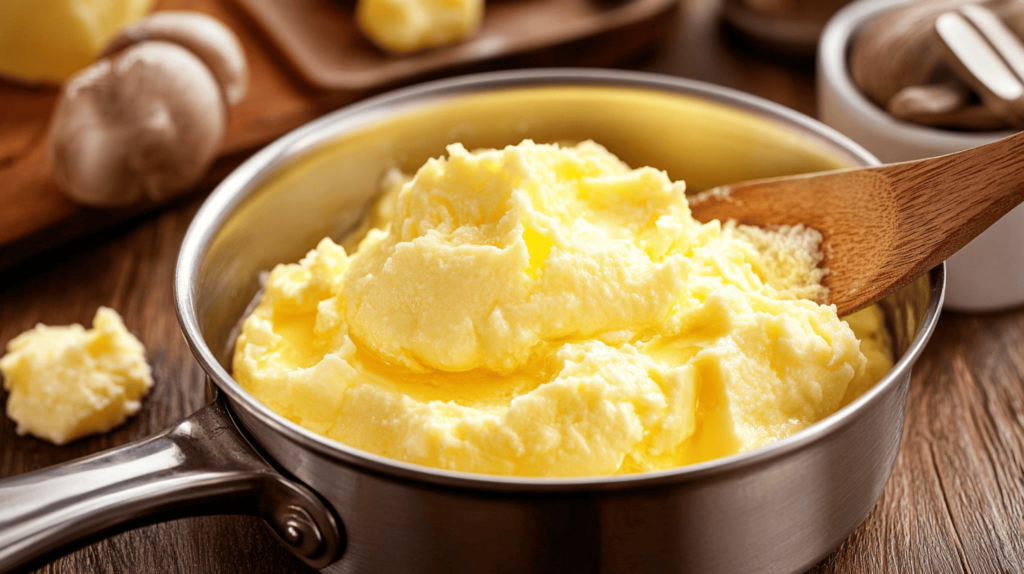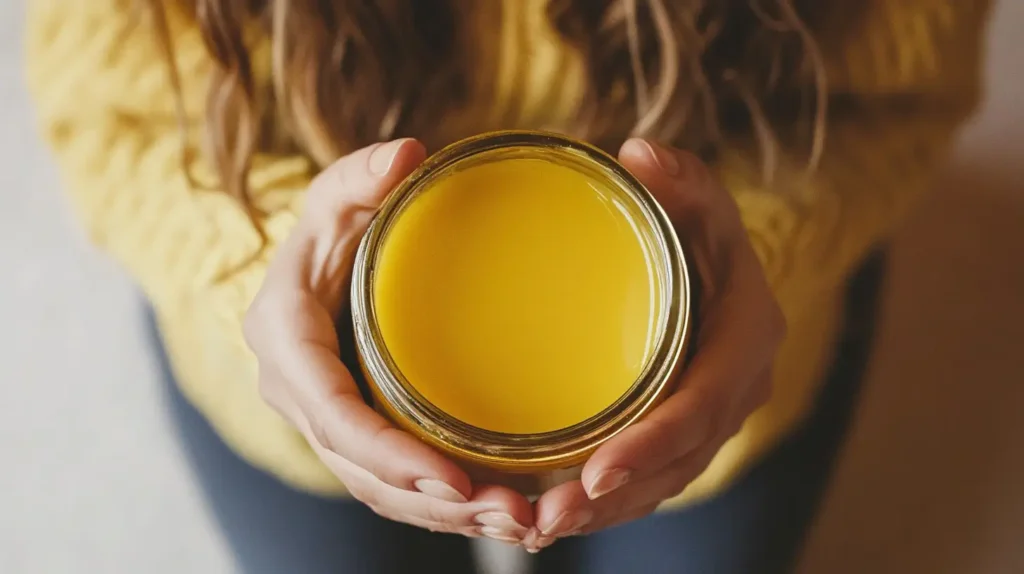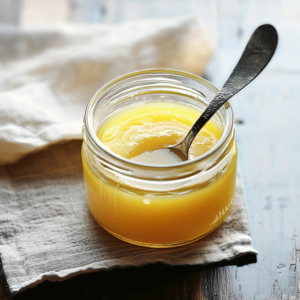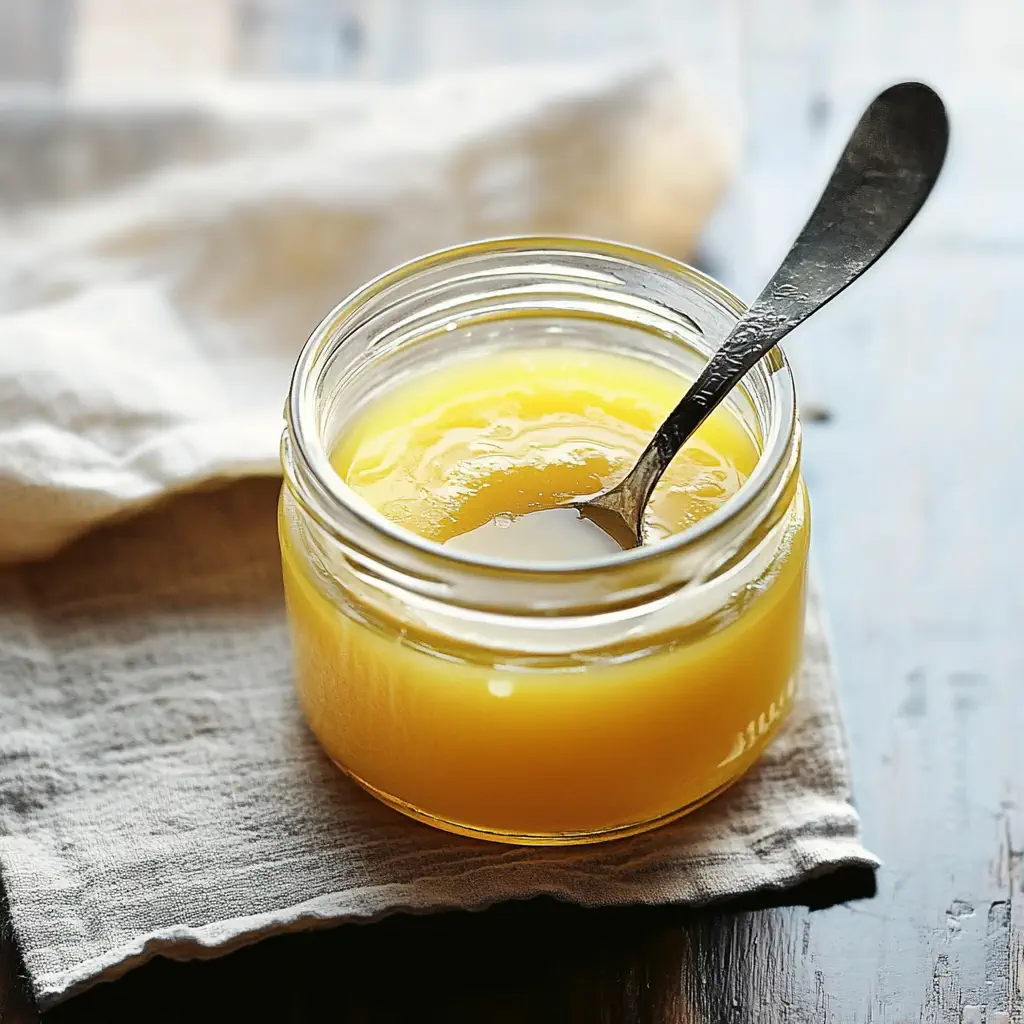Ghee oil is a golden, flavorful fat that has been used in cooking and wellness for centuries. Originating in India, it has become popular worldwide for its rich taste, high smoke point, and numerous health benefits. While you can find ghee oil in stores, making it at home is surprisingly easy and comes with many perks. Homemade ghee oil is fresher, free of preservatives, and allows you to control the quality of ingredients.
But what exactly is ghee oil, and how can you make it? In this article, we’ll walk you through everything you need to know about ghee oil, including its benefits, uses, and a step-by-step guide to creating your own batch at home. Whether you’re an experienced cook or just starting out, this guide will help you master the art of homemade ghee oil.
Table of Contents
What is Ghee Oil?
Ghee oil is a type of clarified butter, but it goes a step further than just removing the milk solids. When you heat butter, the water evaporates, and the milk proteins separate, leaving behind pure butterfat—this is what we call ghee. Unlike regular butter, ghee has a nutty aroma and a deeper, richer flavor.
What makes ghee oil stand out is its long shelf life and ability to withstand high temperatures without burning. It’s widely used in cooking, especially in Indian, Middle Eastern, and Southeast Asian cuisines. Ghee oil is also a popular choice for those who are lactose intolerant, as the clarifying process removes most of the lactose and casein.
Key Benefits of Ghee Oil
- High Smoke Point: Perfect for frying and sautéing.
- Lactose-Free: Great for those with dairy sensitivities.
- Rich Flavor: Adds a nutty, aromatic taste to dishes.
- Health Properties: Packed with healthy fats, vitamins A, D, E, and K, and antioxidants.
Homemade ghee oil takes these benefits to another level by ensuring it’s made with care and fresh ingredients.
Health Benefits of Ghee Oil
Ghee oil isn’t just tasty—it’s healthy too! Here are its key benefits:
- Improves Digestion: Ghee contains butyric acid, which supports gut health and reduces bloating.
- Boosts Immunity: Packed with antioxidants and vitamin A to strengthen your immune system.
- Rich in Healthy Fats: Provides energy, supports heart health, and contains omega-3 fatty acids.
- Brain Food: Helps improve focus, memory, and mental clarity.
- Skin and Hair Care: Acts as a natural moisturizer for dry skin and a conditioner for soft, shiny hair.
- Lactose-Free: Safe for people with dairy sensitivities due to its clarifying process.
- Supports Weight Management: Keeps you full longer and may help boost metabolism.
- Anti-Inflammatory: Reduces inflammation, making it helpful for conditions like arthritis.
- Good for Eyes: Contains vitamin A, which supports vision and eye health.
- Long Shelf Life: Stays fresh longer without refrigeration.
These benefits make ghee a powerful and versatile addition to your daily routine!

Step-by-Step Guide to Make Ghee Oil at Home
Here’s a detailed table with measurements to help you make ghee oil at home:
| Step | What to Do | Measurements | Tips |
|---|---|---|---|
| 1. Gather Ingredients | Get unsalted butter (preferably grass-fed). | 500 grams (about 2 cups) | Use high-quality butter for the best flavor and nutrition. |
| 2. Melt the Butter | Place the butter in a heavy-bottomed pan and melt it slowly over low heat. | No extra ingredients needed. | Use a pan with a thick base to distribute heat evenly and prevent burning. |
| 3. Simmer the Butter | Let the butter simmer. It will separate into foam (top), golden liquid (middle), and milk solids (bottom). | No specific time, approx. 10–15 min | Keep the heat low and avoid stirring too much to allow proper separation. |
| 4. Remove the Foam | Skim off the white foam that forms on the surface using a spoon. | Skim regularly during the process. | Discard the foam or save it for other recipes like soups or gravies. |
| 5. Watch for Color | Observe the ghee as it turns golden and develops a nutty aroma. | Ready when liquid is golden clear. | Stay close to the pan to avoid burning—it happens quickly once it’s ready. |
| 6. Strain the Ghee | Let the ghee cool slightly, then strain it through a fine-mesh strainer or cheesecloth into a glass jar. | Use a clean glass jar. | This step removes milk solids, leaving only pure butterfat. |
| 7. Store the Ghee | Allow the ghee to cool completely before sealing the jar. Store it in a cool, dry place or refrigerator. | 1 jar (about 400-450 grams yield). | Use a dry, clean spoon each time to scoop ghee to extend its shelf life. |
Yield Information
From 500 grams (2 cups) of butter, you’ll typically get around 400–450 grams (about 1.5–1.75 cups) of ghee oil.
How to Store Ghee Oil
Proper storage is key to keeping your homemade ghee oil fresh and flavorful for a long time. Follow these simple tips to store your ghee oil the right way:
| Storage Method | Steps to Follow | Shelf Life | Tips |
|---|---|---|---|
| At Room Temperature | – Pour the ghee into a clean, dry glass jar with an airtight lid. – Keep it in a cool, dark place away from sunlight or heat. | 3–6 months | Use a dry spoon every time to avoid contamination. |
| In the Refrigerator | – Transfer the ghee to a sealed container and store it in the fridge. – Let it soften at room temperature before use. | Up to 1 year | Ghee may solidify in the fridge, but this doesn’t affect its quality. |
| Freezing Ghee Oil | – Divide the ghee into small portions and store in freezer-safe containers or silicone molds. – Thaw as needed. | Up to 2 years | Freezing in small portions makes it easier to use without defrosting the entire batch. |

Mistakes to Avoid When Making Ghee Oil
Making ghee oil at home is simple, but small mistakes can ruin the flavor, texture, or quality. To help you succeed, here are common mistakes to avoid and tips to fix them:
| Mistake | What Happens | How to Avoid It |
|---|---|---|
| Using Salted Butter | Salted butter causes splattering during cooking and can alter the flavor of the ghee. | Always use unsalted butter for the best taste and texture. |
| Cooking on High Heat | High heat can burn the milk solids, leaving the ghee with a bitter taste and a dark color. | Use low heat and be patient. Slow cooking ensures the best flavor and aroma. |
| Not Skimming the Foam | Leaving the foam during cooking can make the ghee cloudy and affect its purity. | Skim off the foam regularly using a spoon or ladle. |
| Overcooking the Ghee | Overheating results in a burnt, unpleasant flavor and reduces nutritional value. | Remove the ghee from heat as soon as it turns golden and develops a nutty aroma. |
| Not Straining Properly | Residual milk solids in the ghee can cause it to spoil faster. | Strain the ghee through a fine-mesh strainer or cheesecloth to remove all solids. |
| Using a Wet or Dirty Jar | Moisture or dirt in the storage jar can lead to mold or spoilage. | Always use a clean, dry, and airtight glass jar for storing ghee. |
| Storing in a Warm Place | Exposure to heat or sunlight can make ghee rancid and reduce its shelf life. | Store ghee in a cool, dark place, away from sunlight and heat sources. |
| Not Watching the Process | Ghee requires attention as it cooks. Ignoring it can lead to burning or overcooking. | Stay near the stove and monitor the color and aroma closely. |
Pro Tips for Perfect Ghee Every Time
- Quality of Butter Matters: Use high-quality, grass-fed unsalted butter for richer flavor and health benefits.
- Stay Patient: The process can take 15–20 minutes on low heat. Don’t rush it.
- Test for Readiness: Ghee is ready when the liquid is clear and golden, and the aroma is nutty.
By avoiding these mistakes, you’ll create a batch of golden, aromatic ghee oil that’s perfect every time!
More inspiring eats you can’t miss:
Frequently Asked Questions About Ghee Oil
1. Can ghee oil go bad?
Yes, ghee can spoil if exposed to moisture or heat. Store it in a dry, airtight jar to keep it fresh.
2. Is ghee oil lactose-free?
Yes, ghee is mostly lactose-free since the milk solids are removed during the clarifying process.
3. How long does homemade ghee last?
Homemade ghee lasts 3–6 months at room temperature and up to 1 year when refrigerated.
4. Can I use ghee for frying?
Absolutely! Ghee has a high smoke point, making it ideal for frying, sautéing, and roasting.
5. Does ghee need refrigeration?
No, ghee can be stored at room temperature, but refrigeration extends its shelf life.
Conclusion
Making ghee oil at home is simple, cost-effective, and rewarding. It offers a rich flavor, numerous health benefits, and versatility in cooking, skincare, and more. By following a few easy steps, you can create pure, preservative-free ghee that stays fresh for months.
Whether you’re frying, baking, or even moisturizing your skin, homemade ghee oil is a healthy, all-natural option worth adding to your lifestyle. Try it today and enjoy the golden goodness in every spoonful!

Ghee Oil at Home: A Simple Guide
Ingredients
- 500 grams about 2 cups
Instructions
- Gather Ingredients – Use high-quality, grass-fed butter for the best flavor and nutrition.
- Melt the Butter – Place the butter in a heavy-bottomed pan and melt it over low heat.
- Simmer the Butter – Let it simmer for about 10–15 minutes. The butter will separate into three layers: foam (top), golden liquid (middle), and milk solids (bottom). Avoid stirring too much.
- Remove the Foam – Skim off the white foam that forms on top using a spoon. Save it for soups or discard it.
- Watch for Color – When the ghee turns golden and develops a nutty aroma, it’s ready. Stay close to avoid burning.
- Strain the Ghee – Let it cool slightly, then strain it through a fine-mesh strainer or cheesecloth into a clean glass jar. This removes milk solids, leaving only pure butterfat.
- Store the Ghee – Allow it to cool completely before sealing. Store it in a cool, dry place for up to 3 months or in the refrigerator for up to a year.
Notes
- Ghee stays fresh for 3 months at room temperature or up to 1 year in the refrigerator.
- For a nuttier flavor, let the milk solids brown slightly before straining.
- Ghee is lactose-free and suitable for dairy-sensitive individuals.

